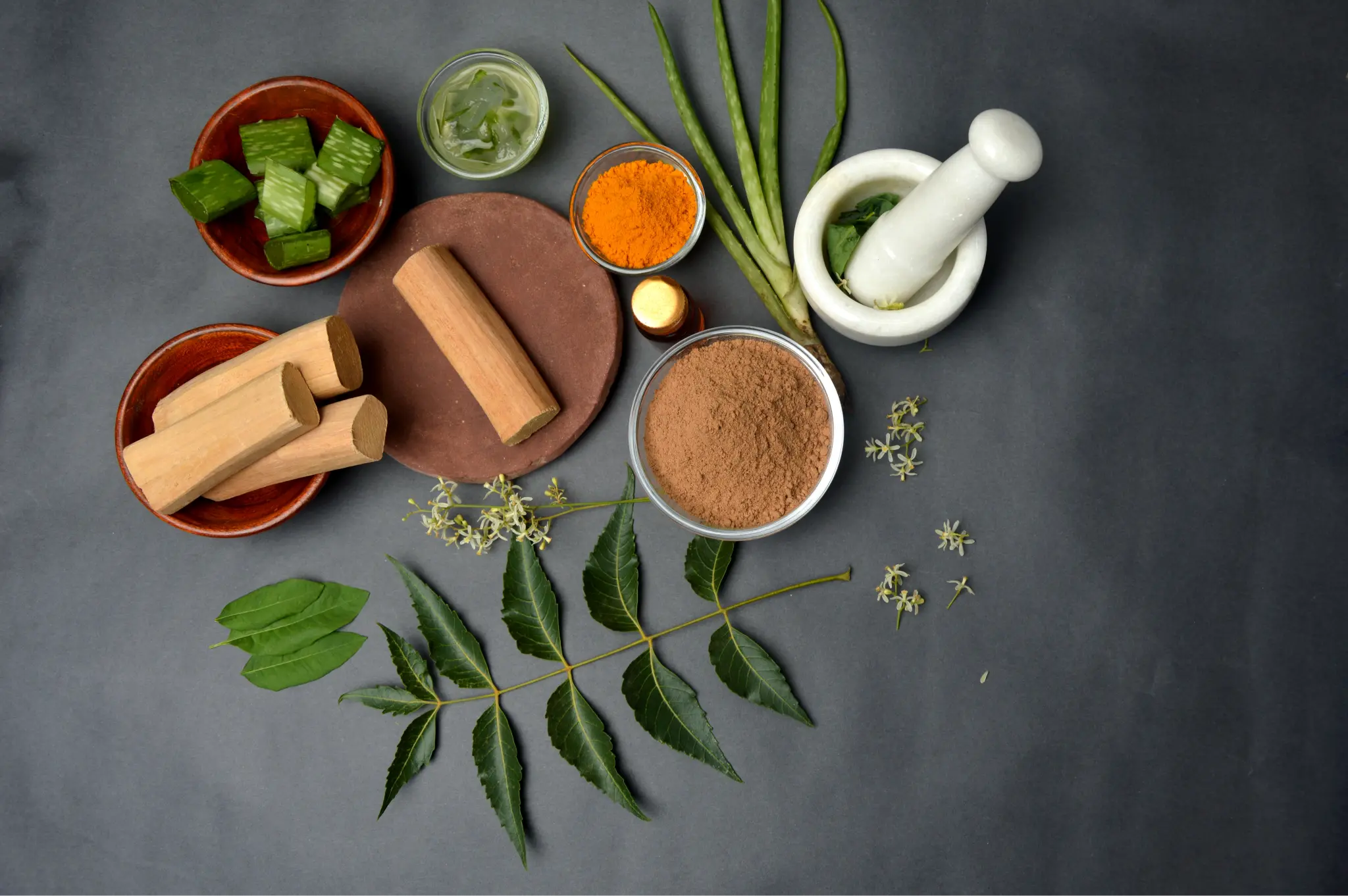Embrace Holistic Healing: Transform Your Health with Ayurvedic Treatments in Kerala
Ayurveda sees the human body as connected to the environment, therefore any environmental changes will impact the body’s physical, mental, emotional, and spiritual well-being. Ayurveda treatment in Kerala also follows this holistic ideology. In Ayurvedic treatments in Kerala, the focus is on treating the root cause, not just the symptoms. Its main focus is to attain a perfect balance between mind, body, and soul for a healthy and active life.
The combination of herbal concoctions and lifestyle modifications in Ayurvedic treatment aims to restore balance to the body’s three primary energies: Vata, Pitta, and Kapha. Every individual possesses these principle energies or doshas with different intensities and scales. The constitution of an individual, known as Prakriti, is determined by the predominant dosha.
In Ayurveda, diseases occur when doshas are imbalanced due to external or internal factors related to diet and physical activity. The goal of our Ayurvedic treatment in Kerala is to optimize all three doshas. Depending on the person’s Prakriti or inherent constitution, the treatment may vary in duration and method.
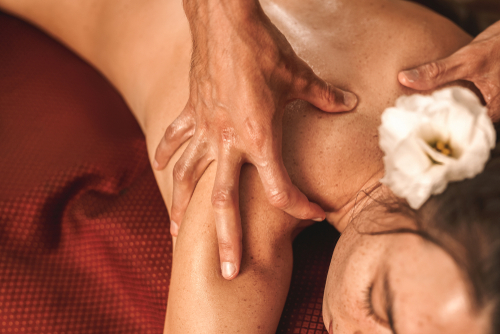
Abhyangam
Abhyangam is a traditional Ayurvedic massage therapy that incorporates heated, medicated oils. Unlike a regular massage, it incorporates specialized techniques and customized herbal oils to address individual needs. Abhyangam seeks to restore balance to the Vata Dosha, induce a state of relaxation, and promote overall well-being by employing specific massage techniques and therapeutic oils. The outcome of abhyanga depends on the choice of oils. It can be used to treat joint disorders, arthritis, certain skin conditions, and muscle wasting, and to enhance overall strength, relaxation, and sleep.
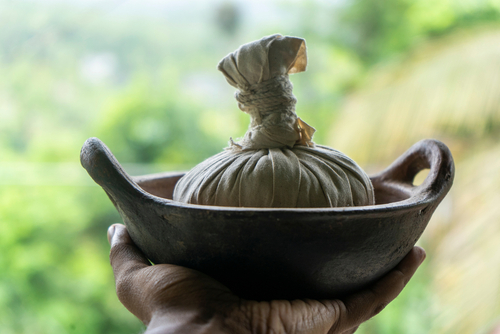
Kizhi (Potali swedam)
This involves applying heated cloth bags filled with herbs, oils, rice, herbal powders or sand all over the body as part of an ayurvedic treatment. A Kizhi is a tightly packed poultice filled with herbs and heated in warm herbal oil during the treatment. The Kizhi is applied to the specific affected area or the entire body, depending on the needs. By combining the active ingredients of herbs and oils with warm poultices, circulation is improved and body stiffness and pain are reduced. Your pain type and cause determine the selection of Kizhi ingredients, herbal oils, and massage techniques.
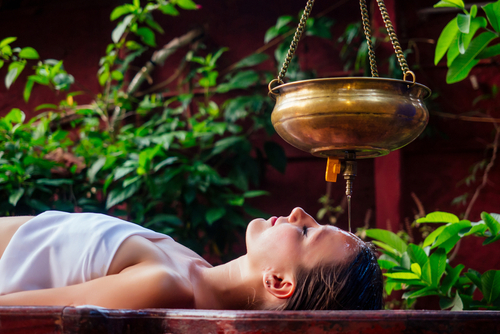
Shirodhara
In Shirodhara, a steady stream of Ayurvedic oil, medicated milk, or special medicated buttermilk is poured onto the patient’s forehead. This process frequently produces a trance-like mental state, resulting in deep relaxation of both the mind and body. The central nervous system is deeply relaxed and revitalized by it. The best results from Shirodhara are achieved when combined with Abhyangam. Shirodhara Therapy is effective in treating all kinds of ailments. Altering the liquid medium and procedure based on the dosha condition can help alleviate any ailment.
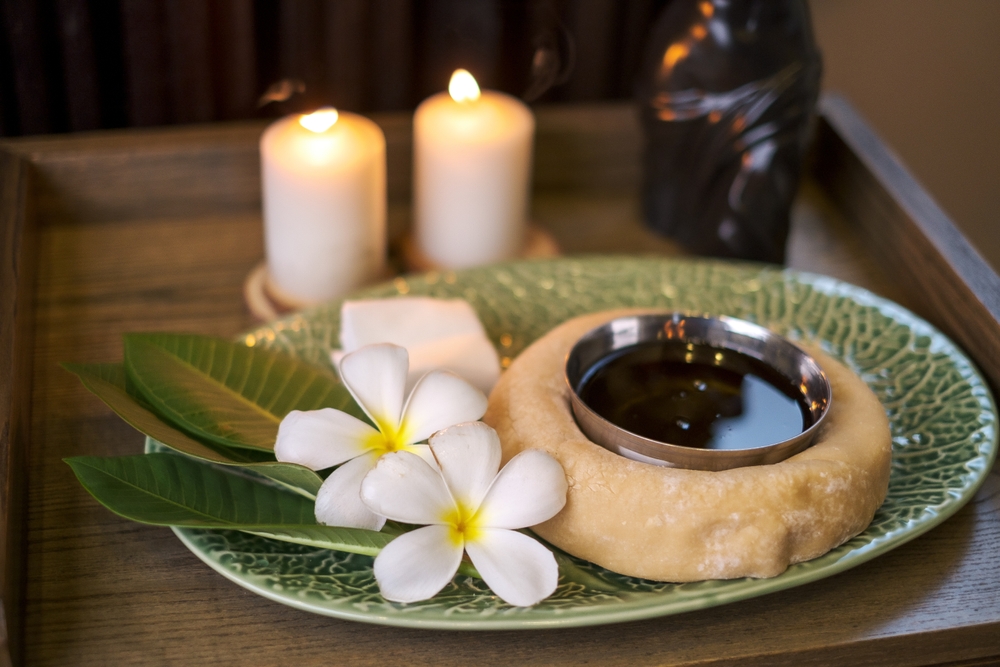
Vasti
Vasti is simply a medication enema given via rectum. Vasti or Basti is a special treatment method for treating Vata disorders. As it aids in detoxification, dosha restoration, and systemic renewal, Basti is regarded as the most effective disease treatment method. It can simultaneously target specific pathologies and nourish tissues for therapeutic purposes. By using medicated oils or herbal decoctions, this therapy rapidly eliminates vitiated doshas while simultaneously providing nourishment to the body.
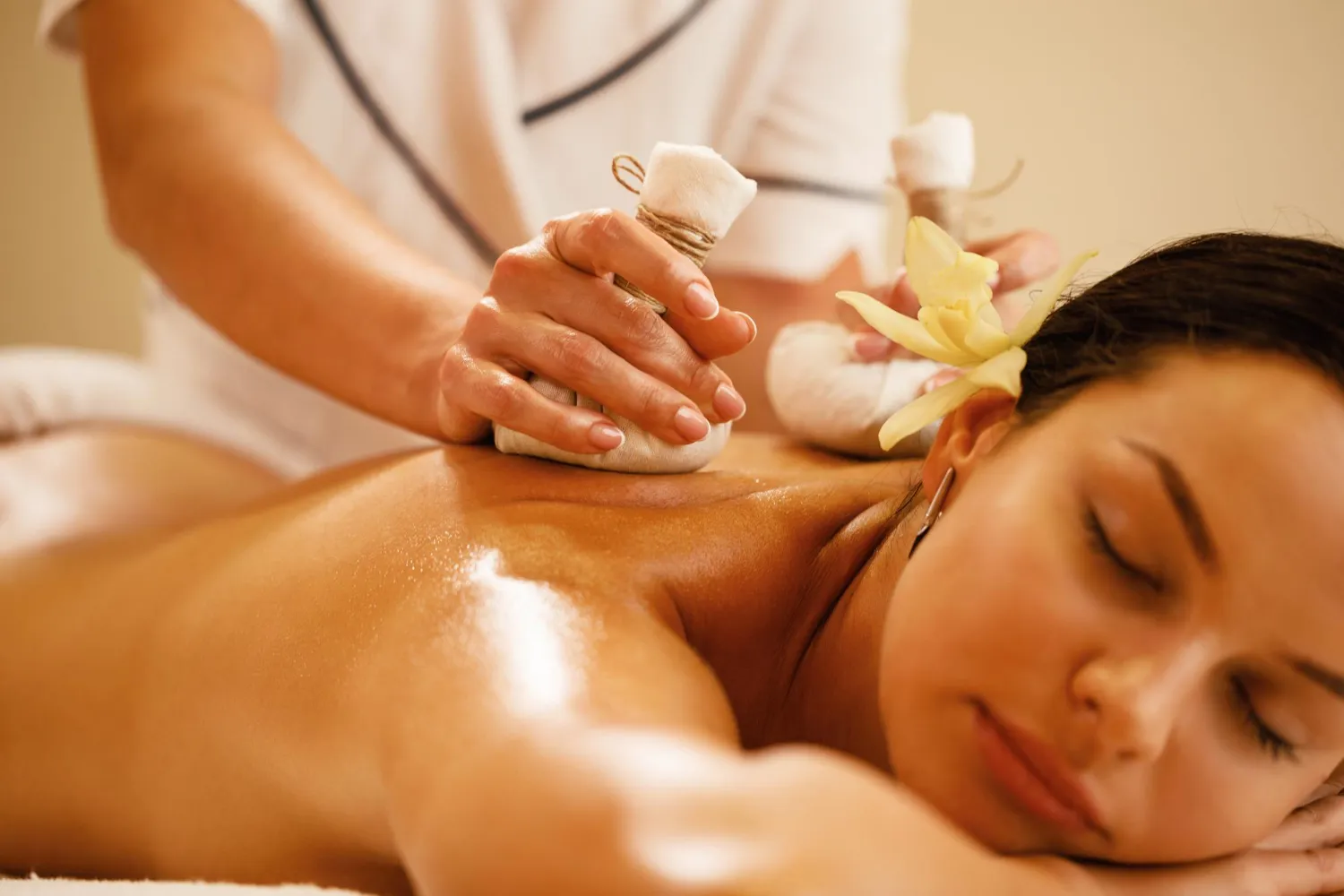
Pizhichil
Pizhichil is a combined treatment that incorporates Snehana and Swedhana therapies. Snehana means oil massage, while Swedhana means to induce sweat. The treatment involves dipping a cloth in warm medicated oil, squeezing it onto the patient, and then giving a rejuvenating massage. This treatment promotes blood circulation and eliminates toxins through sweating. Pizhichil safeguards the body against illnesses and boosts immunity for a healthy life. Many people find this treatment to be extremely relaxing and revitalizing. Pizhichil is particularly advantageous for treating Vata disorders.
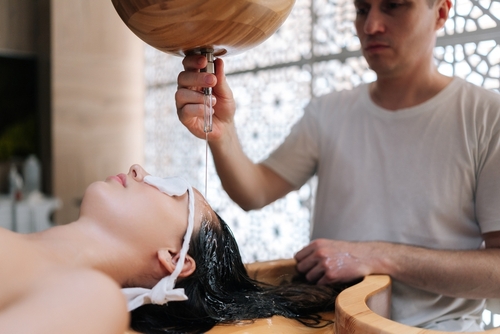
Thakradhara
In Thakradhara, medicated buttermilk is gently poured over the patient’s forehead. Buttermilk is used for its cooling properties that promote relaxation of both body and mind. After oil is applied to the patient’s body, they are instructed to lie on their back. Next, the patient’s head is drenched with medicated buttermilk poured from a dhara vessel suspended inches above the forehead. A hole in the vessel lets the buttermilk flow out. The patient wears a headband on their forehead, positioned above the eyebrows, to protect their eyes from the buttermilk. This treatment effectively addresses stress, skin conditions, and detoxification, and promotes relaxation.
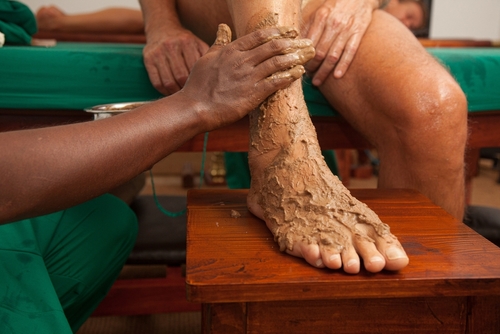
Udwarthanam
Udwartana is an Ayurvedic therapy that includes a massage with dry or herbal powder. Normally, medicated powders are applied to the body with upward strokes. The first step involves applying medicated oils to the body, then herbal powders are applied. The massage is done with upward strokes to promote circulation, exfoliate the skin, and aid detoxification. Udwartana can be performed alone or as part of a full Ayurvedic treatment plan. It is a common recommendation for conditions such as obesity, lymphatic congestion, and certain skin disorders.
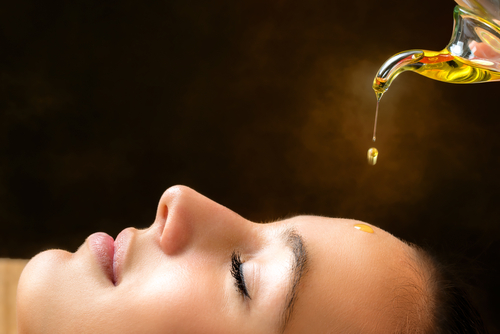
Dhanyamaladhara
Dhanyamlam is a unique herbal infusion that is prepared in accordance with Ayurvedic guidelines and customs. It is primarily used to remove the excess fluid retention and also helps in combating excess weight and fat by having an effect on subcutaneous fat. Dhanyamla starts with a full body oil massage to prime the body for the process and optimise the therapeutic benefits of the ingredients. The massage therapists slowly pour warm decoction on the entire body, excluding the head, while simultaneously massaging. The temperature allows nutrients to open up and penetrate the skin, helping to break down subcutaneous fat and boost metabolism for quick weight loss.
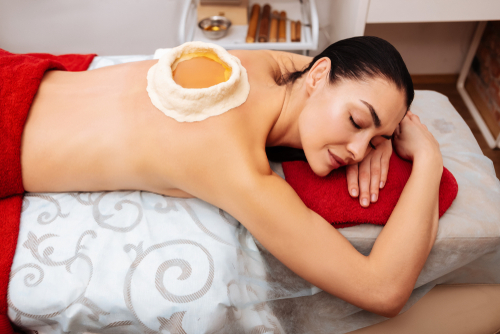
Kativasthi
Kativasthi is an Ayurvedic treatment that involves applying warm medicated oil over the lower back area using a hollow cap-like structure. The treatment starts with a full-body massage called abhyanga, followed by Sweda, where medicated steam is applied to the lower back and legs. The procedure is conducted over a period of 2-3 weeks to alleviate nerve compression and provide relief from degenerative conditions affecting the back. The application of medicated oil in Kativasthi nourishes and benefits the nerves, muscles, and joints in that specific area.
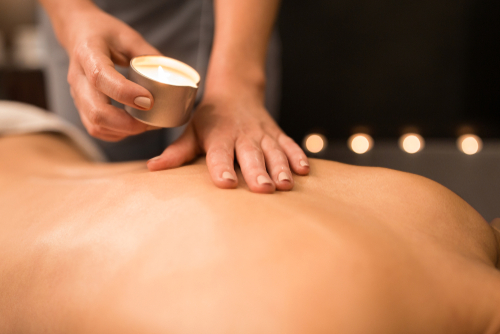
Utharavasthi
Uttaravasti is used to treat genito-urinary disorders in both genders. To administer the therapy, a specific medicinal oil or decoction is inserted into either the urinary bladder or uterus. The medications given vaginally or through the urethral route during uttaravasthi serve to cleanse and nourish. It has a strong medicinal effect that cleans infections and clears passages in the urinary bladder, uterus, and other genital areas, reducing inflammation, irritation, stagnation, and infections. By nourishing the body, it enhances blood circulation, nerve conduction, cell stimulation, and sexual function.
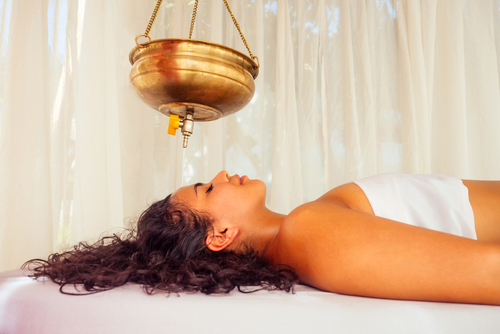
Ksheeravasthi
In the Ayurvedic practice, Ksheeravasti is a specialized treatment that includes the use of medicated milk enema. Its main purpose is to address issues concerning the digestive system, lower back, and neurological ailments. The benefits of Ksheeravasti include nourishing the body, rejuvenating it, and reducing pain and inflammation. This treatment is famous for its ability to soothe and calm, promoting overall balance and well-being in the body.
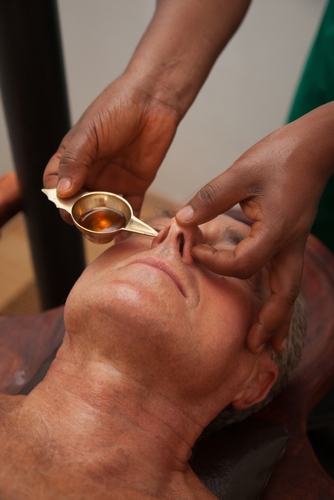
Snehapanam
Snehapanam is an Ayurvedic therapy where clarified butter (ghee) made from cow’s milk is ingested for internal purification prior to Panchakarma treatment. Patients suffering from gastroenterological illness, arthritis, chronic constipation, psoriasis, and similar conditions are advised to consider this treatment. Medicated ghee is administered to patients on an empty stomach for optimal outcomes. Medicinal ghee counteracts excessive gastric juice production in the digestive system. The dosage of Snehapanam varies depending on the person’s health condition and their ability to digest the medication.
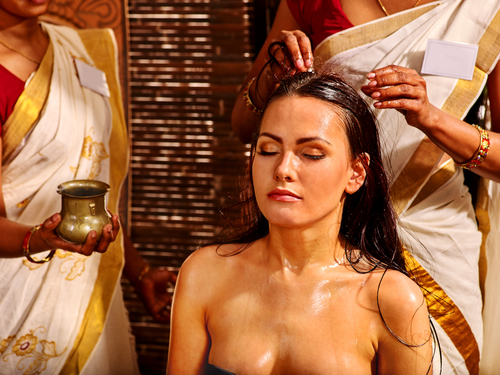
Shirovasthi
Shirovasthi is an Ayurvedic treatment where specialized oils are poured and kept on the head for a specific duration, followed by a complete body massage. In this procedure, a dough-based structure is formed on the patient’s head, resembling a reservoir, with a gap at the top. Then, the reservoir is filled with warm, medicated oil and left for about 30 to 45 minutes. The duration of treatment may differ based on individual requirements and the Ayurvedic doctor’s recommended protocol. The oil deeply nourishes the scalp and head, promoting relaxation and calming the nerves.
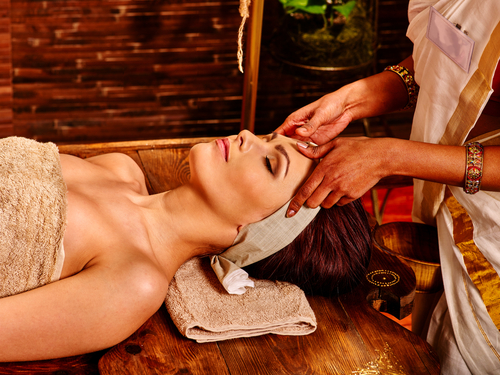
Lepanam
Lepanam is an Ayurvedic treatment suggested for individuals experiencing pain caused by inflammatory conditions. The treatment involves combining medicines and herbal liquids into a paste (known as lepam) and applying it to the affected areas of the body. The lepam functions as a body scrub that helps smoothen your skin, improve blood circulation, and alleviate aches. This is beneficial for a range of inflammatory conditions, such as arthritis, eczema, gout, and skin diseases. Consistent localized applications can decrease inflammation, enhance blood flow, and alleviate inflammatory pain.
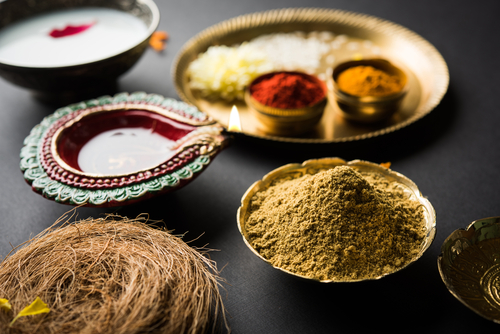
Thalam
“Thalam” means to collect or form a pool in Malayalam. Based on the disease conditions, herbs are chosen and combined with suitable oils to create a paste. This paste is then applied to the centre of the head. The medical paste works on the nerve endings, stimulating them to reduce the pathology and provide relief. Thalam has a calming effect on the mind and cools the body. This treatment is commonly utilized for anxiety, sleep disorders, and reducing body heat. Thalam is effective in enhancing patients’ mental health by nourishing the brain cells, leading to excellent results.
